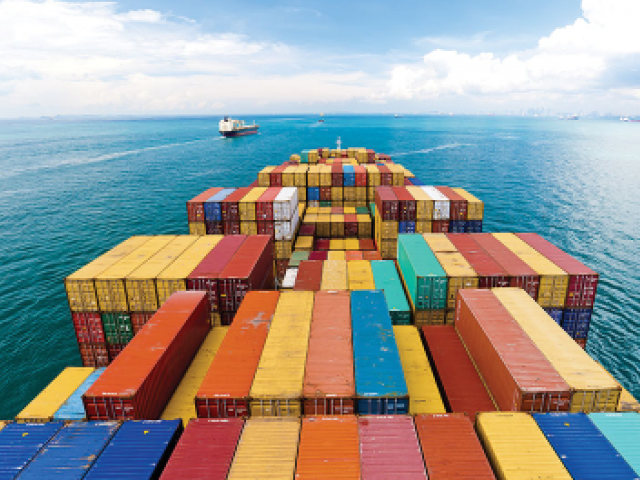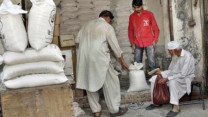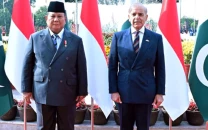Trade deficit slightly contracts to $14.5b in five months
Imports remain almost flat; export growth loses steam

Imports remain almost flat; export growth loses steam.
PHOTO: FILE
The trade deficit in July-November of fiscal year 2018-19 shrank on the back of almost flat growth in imports, showed the figures released by the Pakistan Bureau of Statistics (PBS). The $14.5-billion deficit in Jul-Nov FY19 was nearly 2%, or $301 million, less than the gap in the same period of previous fiscal year.
Exports in Jul-Nov FY19 increased only 1.2% to $9.12 billion. In absolute terms, export receipts rose $116 million. It was the slowest pace of growth in five months, suggesting the growth was losing steam.
The Ministry of Commerce needs to come up with some reasons for the stagnant exports even after pumping billions of rupees worth of subsidies over the past three years.
World Bank asks Pakistan, India to trade more via land
After former prime minister Nawaz Sharif’s export package of Rs180 billion, the Pakistan Tehreek-e-Insaf (PTI) government has also announced subsidies for the exporters. Last week, the cabinet approved Rs25.5 billion in export subsidy.
Yet the industrialists have failed to expand the export base, which requires a review of the strategy of using taxpayers’ money to support the wealthy who are not even paying their due share of taxes. The exporters are taxed under the final tax regime and pay less than 1% of their gross export receipts as income tax.
In Jul-Nov FY19, the value of imported goods was calculated at $23.6 billion, which was only 0.8% or $185 million less than the import bill in the corresponding period of previous fiscal year. It was for the first time that the cumulative five-month growth in imports turned negative after remaining almost flat in the past four months.
Trade with Pakistan: Russian envoy for opening banking channels
Pakistan had closed the last fiscal year with a trade deficit of $37.6 billion, which became the key reason behind the highest-ever current account deficit of $18.9 billion in the year. The PTI government wants to cut the trade deficit to nearly $26 billion, which seems highly impossible now.
The value of exported goods came in at 260% less than the value of imports. Imports of the country have started to ease due to the State Bank of Pakistan (SBP)’s numerous policy and administrative measures. Additionally, the federal government has imposed heavy regulatory duties on imported goods.
Since December 2017, the SBP has let the rupee depreciate by 34% to Rs139 against the US dollar in a bid to curtail the current account deficit, which is presently Pakistan’s biggest challenge. China has offered a $1-billion duty-free facility to Pakistan for enhancing its exports. As compared to over $15 billion worth of imports, Pakistan exports only $1.2 billion worth of goods to China, which is not commensurate with the potential. PBS data showed that Pakistan’s overall exports contracted 3.1% to $1.84 billion in November 2018 over the same month of previous year. This suggests that the exporters are unable to take benefit of the currency depreciation as they have not moved up on the value chain.
In absolute terms, the export receipts decreased $60 million to $1.84 billion in November. Imports also contracted to $4.62 billion, down $215 million from the same month last year. Consequently, the trade deficit contracted 5.2% to $2.8 billion in November over the same month of previous year. In absolute terms, the deficit narrowed $155 million.
Exports also slid on a month-on-month basis. In November, exports decreased 6.4% over October. In absolute terms, export receipts decreased $125 million.
Imports also shrank 2.8% month-on-month to $4.62 billion. There was a reduction of $132 million in the import bill in November. The month-on-month trade deficit marginally shrank $7 million in November over October, according to the PBS.
Published in The Express Tribune, December 12th, 2018.
Like Business on Facebook, follow @TribuneBiz on Twitter to stay informed and join in the conversation.



















COMMENTS
Comments are moderated and generally will be posted if they are on-topic and not abusive.
For more information, please see our Comments FAQ